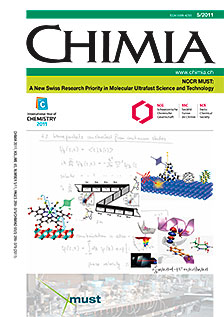Mechanical (QM/MM) Simulations of Adiabatic and Nonadiabatic Ultrafast Phenomena
DOI:
https://doi.org/10.2533/chimia.2011.330Keywords:
Excited states, First-principles molecular dynamics, Nonadiabatic dynamics, Qm/mm simulations, Rhodopsin, Time-dependent density functional theoryAbstract
A thorough theoretical description of ultrafast phenomena that occur in complex systems constitutes a formidable challenge. It not only necessitates the use of quantum mechanical methods that can describe ground and possibly even electronically excited state potential energy surfaces with sufficient accuracy but also calls for approaches that can take the real-time dynamics of a system and the coupling between its electronic and nuclear degrees of freedom fully into account. Over the last years, our group has been active in the development of mixed quantum mechanical/molecular mechanical (QM/MM) methods for the in situ simulations of dynamical phenomena in ground and excited states within the adiabatic (Born-Oppenheimer) approximation. Recently, we have extended our theoretical tools with the explicit inclusion of nonadiabatic effects in the framework of Ehrenfest dynamics and Tully's fewest switches surface hopping. These extensions allow the theoretical description of nonadiabatic ultrafast phenomena in the gas phase as well as in solution, and complex biological environments.Downloads
Published
2011-05-26
Issue
Section
Scientific Articles
License
Copyright (c) 2011 Swiss Chemical Society

This work is licensed under a Creative Commons Attribution-NonCommercial 4.0 International License.
How to Cite
[1]
Chimia 2011, 65, 330, DOI: 10.2533/chimia.2011.330.







